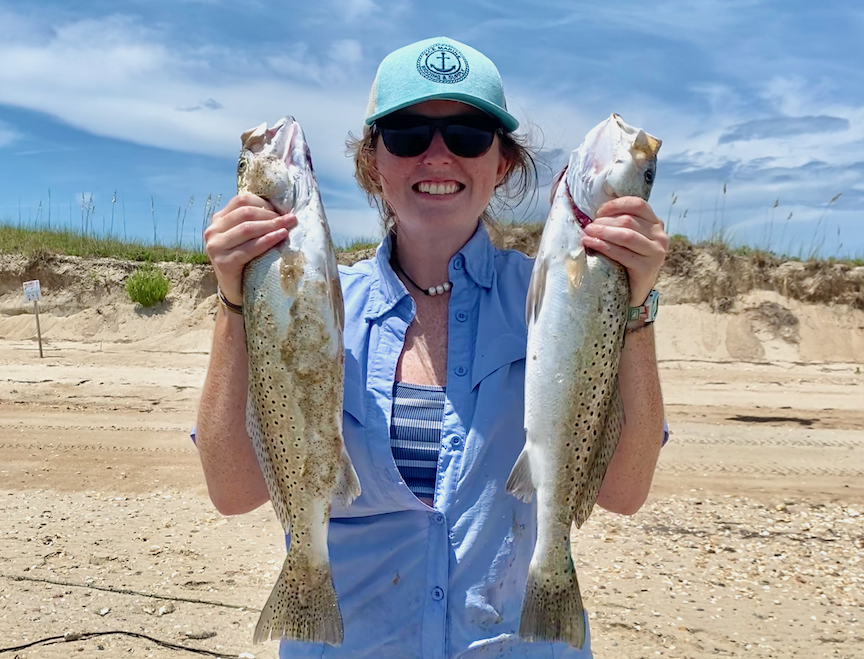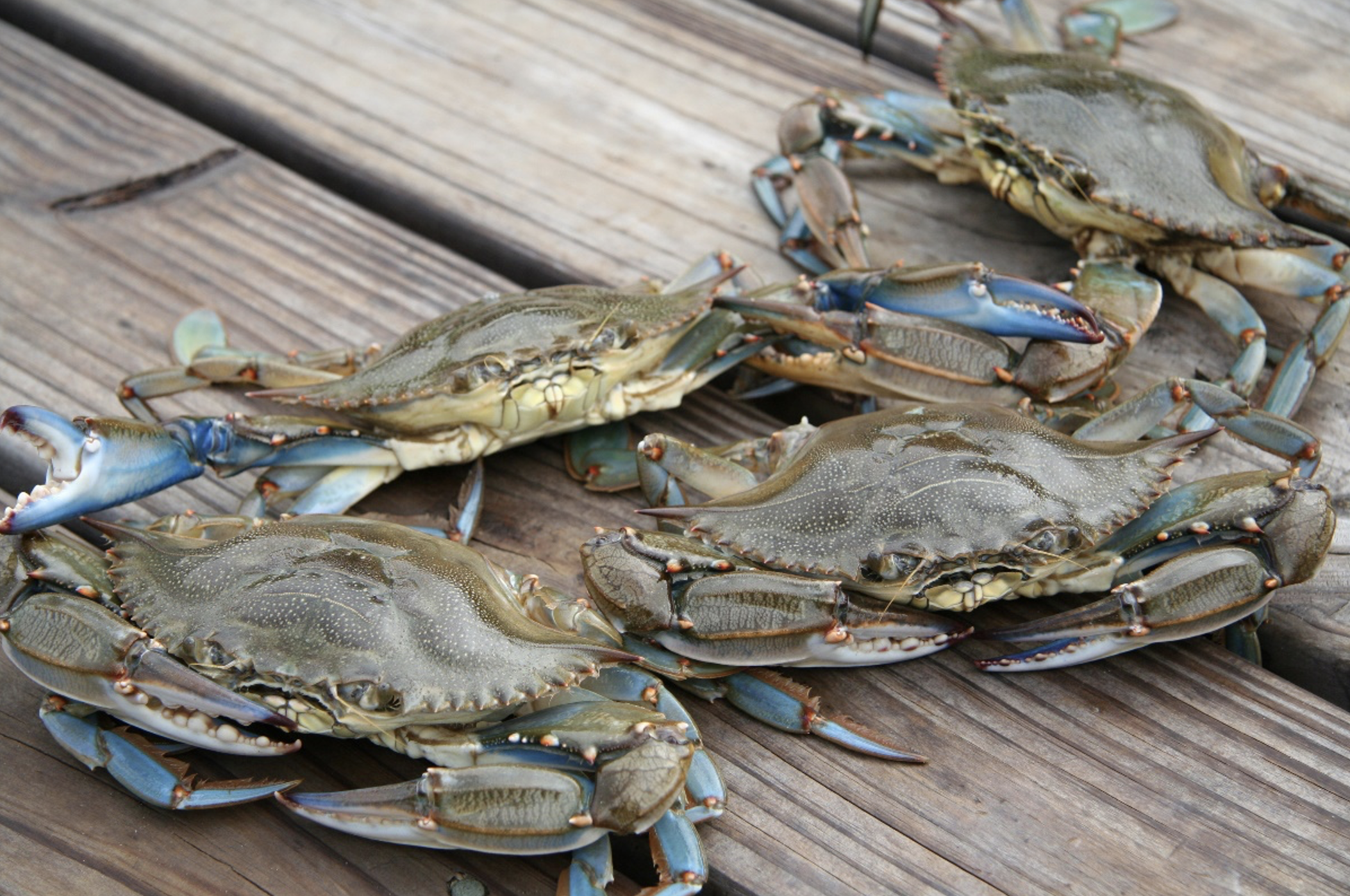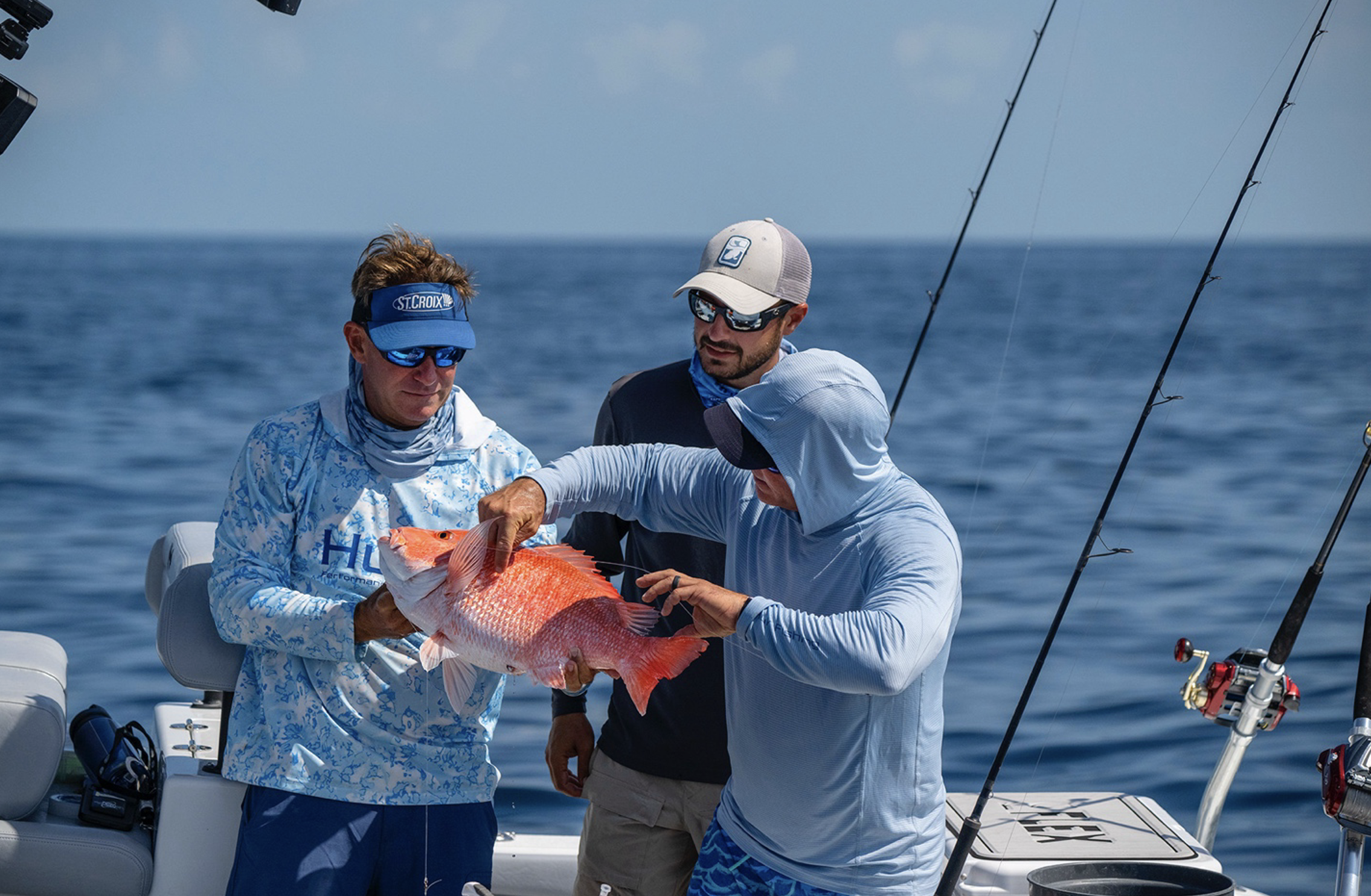How does winter weather affect spotted seatrout?

Water temperatures below 45°F can cause severe “cold stun events.”
In late January, triggered by a large coastal winter snowstorm, the N.C. Division of Marine Fisheries (NCDMF) closed harvest of spotted seatrout, both commercially and recreationally, to protect the population. Prolonged periods of cold air temperatures dropped water temperatures below a point that the fish can withstand.
Research Need
Basic weather conditions, such as temperature and rainfall, influence fish biology and seasonal habitats. Strong winter storms are not the norm in North Carolina’s mild climate but can lead to “cold stun” fish mortality events.
Cold stun events happen when the water temperature falls outside of a fish species’ optimum range, causing lethargic and unresponsive behavior. When water temperatures drop to a point where fishes become stunned, it is often fatal.
Spotted seatrout, in particular, are susceptible to this, and North Carolina is their northern geographic range. However, in controlled temperature experiments, fish have recovered after being stunned if they are immediately placed in warmer water.
To improve management of the fishery, biologists need to better understand the seasonal variation in the numbers and locations of spotted seatrout within North Carolina waters, especially with regard to the severity and duration of cold stun events and how they affect survivability.
What did we study?
Spotted seatrout in the Pamlico Sound, and in the Neuse and Pamlico river systems, served as a model case study of cold stun events. We used NCDMF gillnet survey data to estimate the relative abundance of the stock.
We then developed a model that allowed us to relate changes in population to cold stun events.
What did we find?
Going into the study, we believed that the mortalities due to cold stun events during winter would likely result in a declining relative size of the population the following spring.
Studies have shown that spotted seatrout start to show cold stun symptoms when temperatures drop just below 45°F. Using historical North Carolina water temperature data, we found a statistical relationship between seasonal changes in the size of the population and the total number of days where the water temperature was below 45°F.
Specifically, our model showed that for each additional day the average water temperature stayed below the 45°F threshold, the difference in the size of the population after winter decreased by almost 5.5%.
What else did we find?
Additionally, we found that not all reported cold stun events affected the population equally. We were able to determine the potential location and scale of each cold stun event. We calculated the percentage of the total study area that experienced the most significant declines in spotted seatrout after a cold stun.
Our analysis revealed that some cold stun events seemed to have localized effects, impacting specific regions scattered throughout our study area, while others were more widespread and impacted the entire study area more uniformly. In years with greater population declines and more days when the water temperature was below 45°F, cold stun events significantly had affected a larger area.
So what?
Knowing the severity of past cold stun events provides insight on how to predict their impact on the spotted seatrout population in the future.
NCDMF’s current guidelines to determine whether a cold stun event warrants a fishery closure are based on water temperature triggers or the incidence of cold stunned fish in at least four counties. As a result, NCDMF classified the cold stuns in January 2011 and 2018, for instance, as severe enough to close the fishery. However, our model showed that 2011’s cold stun impacted a significantly larger area than 2018’s.
The methods developed in this study connect water temperatures to predicted losses following a cold stun event, which can inform new management measures and guidelines.
To report a cold stun event, please call Marine Patrol at 800-682-2632 or contact NCDMF Spotted Seatrout biologist Lucas Pensinger at 252-515-5638 or Lucas.Pensinger@ncdenr.gov.
Reading
Brooks J., Buckel J., Cao J. (2024). Quantifying intra-annual changes in abundance and distribution to identify the magnitude and scale of potential mortality events. Estuarine, Coastal and Shelf Science. 311. https://doi.org/10.1016/j.ecss.2024.109009
Funding was provided by the NMFS Sea Grant Joint Fellowship and the RTG summer fellowship.

Johnna Brooks (above and in the lead photo) grew up on a small island near the Outer Banks of North Carolina. As the daughter of four-plus generations of commercial fishermen, she has been fishing for as long as she can remember. Her background is what inspired her to pursue her Ph.D. in biomathematics from NC State, where she studies quantitative fisheries biology and population dynamics to aid in management. After she graduates, she wants to represent and serve her community and others like it by working in a marine lab as a stock assessment scientist and assist in the management of fisheries. Her ultimate goal is to make sure that future generations are able to enjoy this resource like she was fortunate enough to do growing up.

- Categories:



